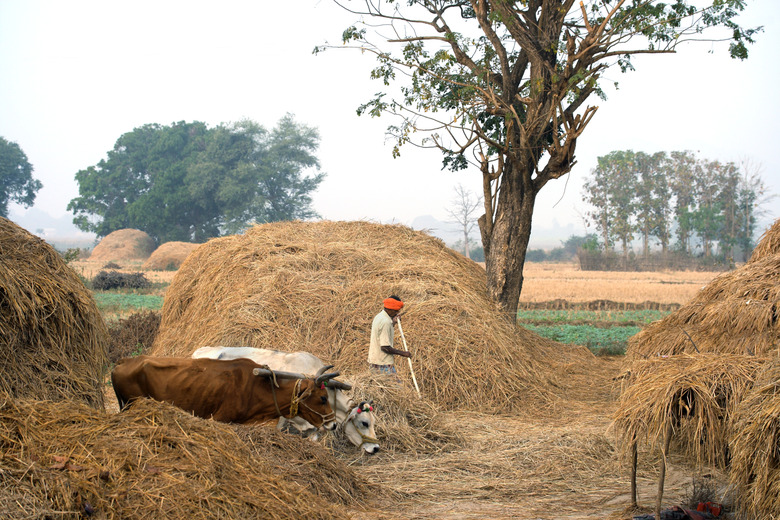What Effect Does El Nino Have On Monsoon Rain?
El Nino is the name given to the warm ocean currents along the Pacific coast of South America that arise every few years at about Christmas time. The El Nino phenomenon is a part of a chain of meteorological events that extends from the eastern Pacific to northern Australia, Indonesia and into the heartland of India. There is a rather weak correlation between El Nino and the Indian monsoon rains.
The El Nino Southern Oscillation
The El Nino Southern Oscillation
Every two to seven years, warmer than normal ocean currents, dubbed El Nino — the Christ Child — by Peruvian fishermen, appear in the Pacific Ocean near the coasts of Peru and neighboring countries at about Christmas time. El Nino years alternate with the El Nina years when the currents are cooler than normal. This shift is a part of the El Nino Southern Oscillation, or ENSO, which also includes the oscillation of many other meteorological parameters. The easterly trade winds are the main drivers of ENSO. They pile very warm waters along the western Pacific, but when they subside, the warm waters spread to the rest of the Pacific causing the general warming of the El Nino years.
Monsoons
Monsoons
Monsoons are winds caused by the temperature difference between a land mass and the adjacent ocean. Monsoons occur throughout the world — parts of Africa, the Arabian peninsula and Arizona and the neighboring regions of California and Mexico. But the Indian monsoon — which besides India, also affects other regions of south and southeast Asia and Australia — is the most monetarily important because of its profound influence on the economy of India and neighboring countries. It is directly linked to the ENSO phenomenon. In summer months, temperatures over much of India rise to as high as 110 degrees Fahrenheit while the Indian Ocean is much cooler. Consequently, the warm air over the land rises and cooler moisture-bearing air blows in from the sea, bringing heavy rains to the region.
Indian Monsoon Model
Indian Monsoon Model
ENSO-induced warm zones in the Pacific cause the warm air over them to rise and initiate circulation cells. Such cells along northern Australia, Indonesia and the eastern edge of the Indian Ocean could have their downdraft sides over a nascent monsoon circulation cell in the Indian Ocean, which would disrupt its formation, causing poor monsoon rains over the subcontinent. This model implies that El Nino years should coincide with deficient monsoon rains.
What the Records Show
What the Records Show
Analysis by the India Meteorological Department shows that, of the 18 El Nino years between 1880 and 2006, twelve coincided with deficient or below-normal rainfall in India. This means that, for a third of the time, there was no correlation, and that has resulted in some spectacularly wrong forecasts for the monsoon. More recent research aimed at finding a more robust correlation indicates that not all El Ninos cause drought, and only warming in the central Pacific correlates with drought in India while warming in the eastern Pacific means a normal monsoon.
References
- University Corporation for Atmospheric Research: Children of the Tropics: El Nino and El Nina
- University of California San Diego: SIO Talley Topic 8: Monsoons, El Nino
- University of Colorado Boulder: Researchers Unravel the Mystery of El Nino's Link to the Indian Monsoon
- National Oceanic and Atmospheric Administration: The El Nino FAQ
Cite This Article
MLA
Soonawala, Nash. "What Effect Does El Nino Have On Monsoon Rain?" sciencing.com, https://www.sciencing.com/effect-el-nino-monsoon-rain-21042/. 24 April 2017.
APA
Soonawala, Nash. (2017, April 24). What Effect Does El Nino Have On Monsoon Rain?. sciencing.com. Retrieved from https://www.sciencing.com/effect-el-nino-monsoon-rain-21042/
Chicago
Soonawala, Nash. What Effect Does El Nino Have On Monsoon Rain? last modified March 24, 2022. https://www.sciencing.com/effect-el-nino-monsoon-rain-21042/
